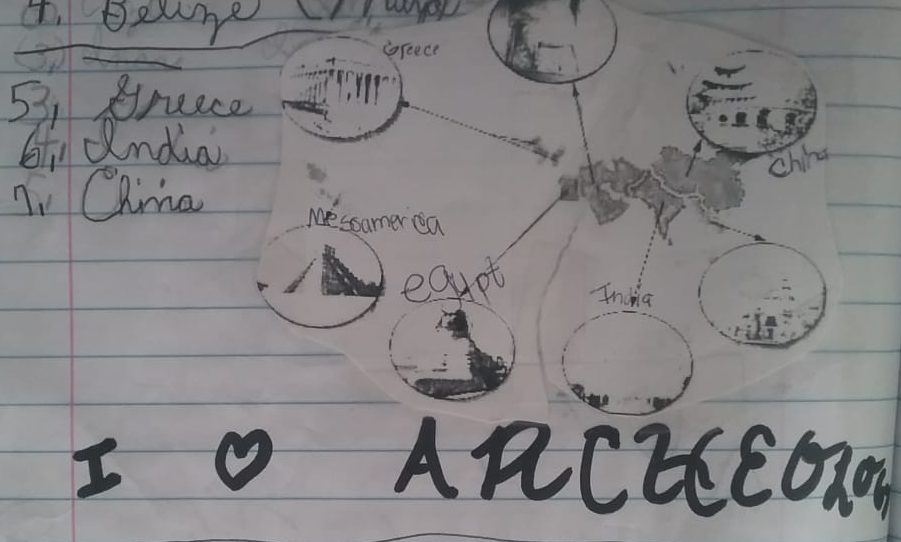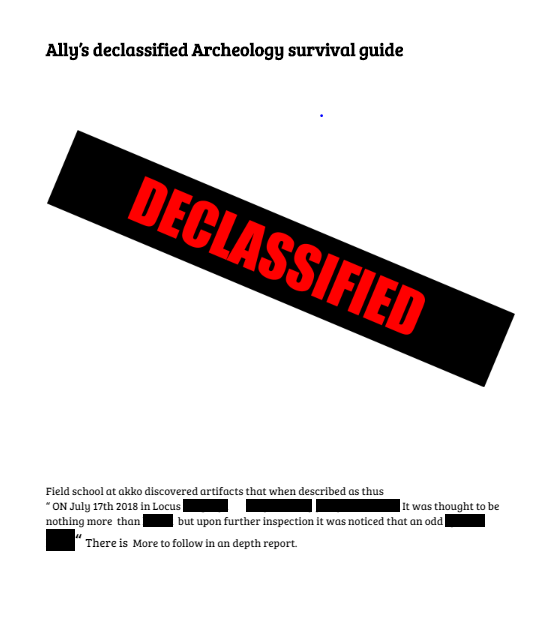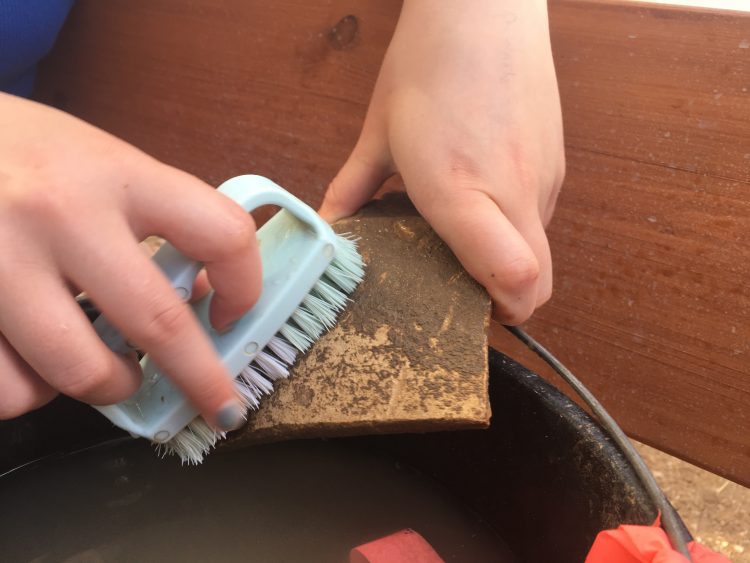I ❤️ Archaeology!!!
By Caitlin Donahue. When I was in the 3rd grade, I decided that I wanted to be an archaeologist when I grew up. My dad had continuously exposed me to the joys and wonders of the ancient world, and in the process, he created a monster. I realized my passion for history and archaeology and never looked back
Shortly after my 9-year-old self had determined my future career path, I began working on my “Archaeology Notebook,” as I called it. A very creative title, if I do say so myself. I would spend my days after school researching my favorite topics or regions of the ancient world and write a summary, or at least attempt to, on that particular subject. I’d include poorly drawn illustrations of ancient monuments, fun facts that may not have been entirely accurate, and embarrassing side notes and doodles such as “I ❤️archaeology,” and so on.
My intention for this notebook was to cover a wide array of historical topics and groups, varying from ancient Egypt to Mesoamerica to the Vikings to ancient Greece, etc.
Although this notebook is somewhat embarrassing to look through now, it allowed me to express my passion and encouraged me to always try to learn about different places and parts of history.
Fast forward to the present, and it is clear to see that I took my 3rd grade decision to become an archaeologist very seriously. I am here in Akko and loving every second of my very first dig, and am unbelievably excited to see what else the future has in store for me. I never once had a back-up plan or another career path in mind if archaeology had turned out to be the wrong choice for me, so it is insanely relieving to finally know for sure that I ❤️ archaeology just as much as I always thought.
However, my college classes and work on Tel Akko have led me to the realization that 9-year-old me knew very little about what archaeology fully entails. Growing up, I was definitely biased towards large-scale and impressive ancient monuments and civilizations. Basically, I was interested in the type of archaeology that people generally associate with Indiana Jones and other stereotypical depictions of the ancient world. Excavating at Tel Akko has allowed me to gain a greater sense of appreciation for the seemingly mundane and often overlooked aspects of the ancient world. Now with every pottery sherd and bone fragment I uncover,I feel as if I am helping to gradually piece together the history of Tel Akko and the purpose it served in the ancient world.
Another important thing Tel Akko has helped me realize is my love for excavation. It was always a concern of mine that despite my love of history, excavation just may not be for me. I’m the type of person to scream whenever I see a spider, so the notion of encountering scorpions and other creepy crawlers was slightly unsettling. Luckily, these fears were quickly put to rest during the first day of field work at Tel Akko. I was covered in dirt and sweat and had blisters forming on my hands from never having done any manual labor before, and honestly, I’d never been happier.
I’m still not a huge fan of seeing giant spiders and other weird insects I’ve never seen before, but so far I have not caused a scene and freaked out so I’d say that’s pretty good. I now find myself daydreaming about dirt, sweeping off ashlars, trimming baulks, and removing fieldstones, but I’m not complaining.
While I can’t determine if my “Archaeology Notebook” was cute or incredibly cringe-worthy, I am thankful that I was able to find and stick with something that I am so passionate about. Working at Tel Akko and experiencing the archaeological process in a tangible manner has helped to validate my passion and strengthen my outlook on the future. To sum it all up: Tel Akko has confirmed the dream I’ve had since third grade, and it’s only the beginning.




